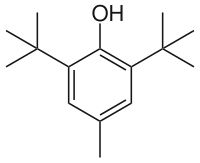
Photo from wikipedia
Currently, the majority of cell-based studies on neurodegeneration are carried out on two-dimensional cultured cells that do not represent the cells residing in the complex microenvironment of the brain. Recent… Click to show full abstract
Currently, the majority of cell-based studies on neurodegeneration are carried out on two-dimensional cultured cells that do not represent the cells residing in the complex microenvironment of the brain. Recent evidence has suggested that three-dimensional (3D) in vitro microenvironments may better model key features of brain tissues in order to study molecular mechanisms at the base of neurodegeneration. So far, no drugs have been discovered to prevent or halt the progression of neurodegenerative disorders. New therapeutic interventions can come from phytochemicals that have a broad spectrum of biological activities. On this basis, we evaluated the neuroprotective effect of three phytochemicals (sulforaphane, epigallocatechin gallate, and plumbagin) alone or in combination, focusing on their ability to counteract oxidative stress. The combined treatment was found to be more effective than the single treatments. In particular, the combined treatment increased cell viability and reduced glutathione (GSH) levels, upregulated antioxidant enzymes and insulin-degrading enzymes, and downregulated nicotinamide adenine dinucleotide phosphate (NADPH) oxidase 1 and 2 in respect to peroxide-treated cells. Our data suggest that a combination of different phytochemicals could be more effective than a single compound in counteracting neurodegeneration, probably thanks to a pleiotropic mechanism of action.
Journal Title: Antioxidants
Year Published: 2019
Link to full text (if available)
Share on Social Media: Sign Up to like & get
recommendations!